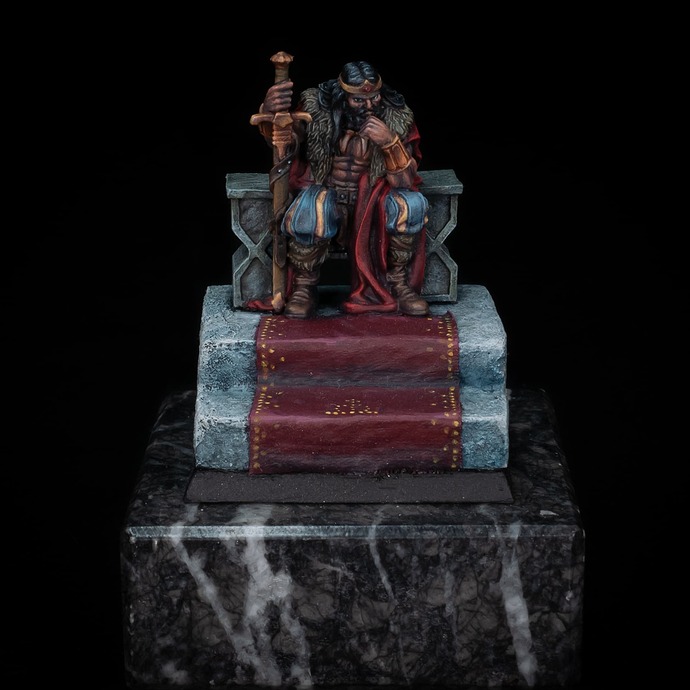I could spend weeks talking about the subject… but others have already done so, in a more professional manner than I ever could. I would recommend e.g. Privateer Press’s beginner tutorials on Youtube.
And if your first paint jobs look awful, don’t be disheartened or ashamed. Everyone started out as a total beginner. I still have some of my earliest miniatures from ~30 years ago I can show to would-be painters.
If you know a veteran painter, show your works to them (either face-to-face or online) and ask how you can improve. If you’re lucky, they can teach you some easy tricks.
Some people will recommend getting professional quality paint brushes from the get-go. I don’t. As a beginner, you’re going to ruin several brushes while learning how to use one. If you can find e.g. Windsor & Newton’s synthetic watercolor brushes at a local craft store (or even supermarket), they’re decent quality for a reasonable price. In fact, most of the models I’ve shown on this thread were painted using those W&N watercolor brushes. Only for the finest details will I reach for my Kolinsky sable brushes.
On the other hand, you will want acrylic paints designed for miniature painting. There are quite a few good quality product lines. Personally, I use a mix of Formula P3, Citadel, Vallejo and Army Painter, with a few random bottles from other manufacturers. The easiest solution is to pick the ones you can find at your local craft or gaming store.
For primer (that is, the layer of paint that goes onto the bare model first, to make the rest of your colors stick to the surface) I recommend Vallejo’s Acrylic-polyurethane primers. They’re designed for airbrushes, but you can easily use them with a regular paintbrush, too. Just a word of caution: unlike regular acrylics, the polyurethane paints are toxic, so don’t lick your brush while using these primers (this is not a joke - many painters moisturize their brushes by licking them).
I would first focus on learning brush control, ie. getting the paint where it’s supposed to go. Based on what I’ve seen, Oathmark miniatures have pretty easy details, so they’re good for practicing.
And don’t worry about mistakes. As long as you keep your paint layers reasonably thin, you can always paint over whatever mistake you make.




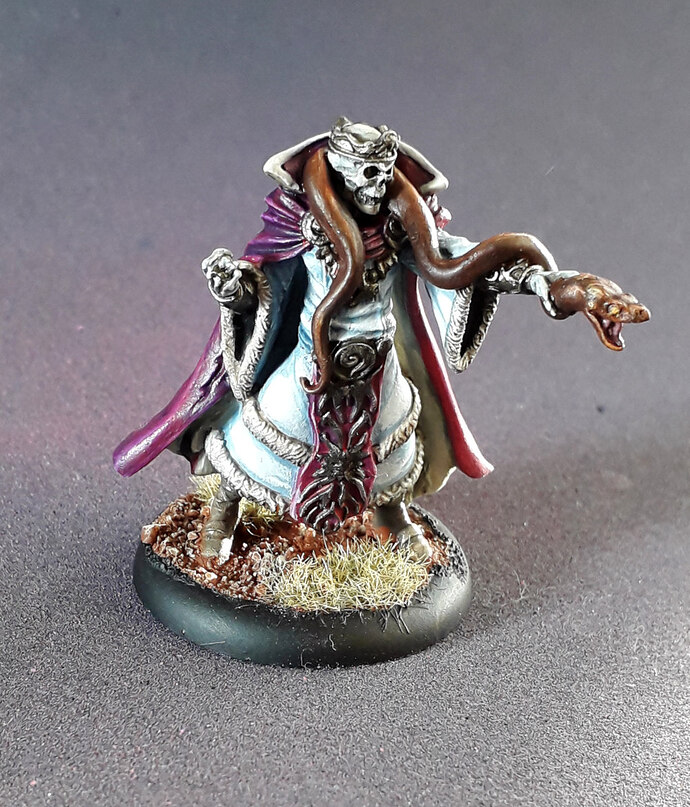


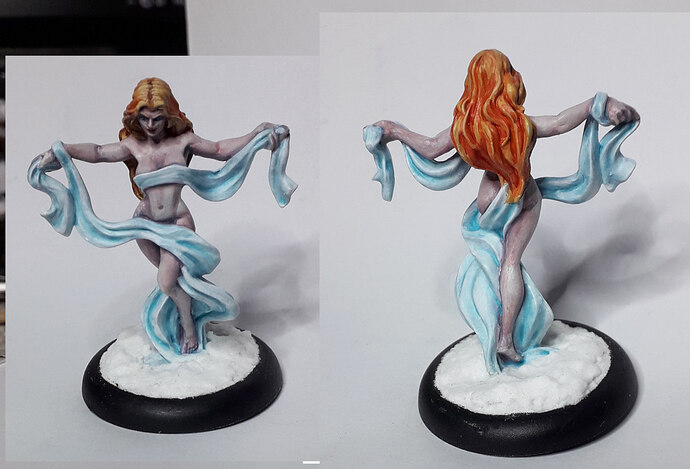
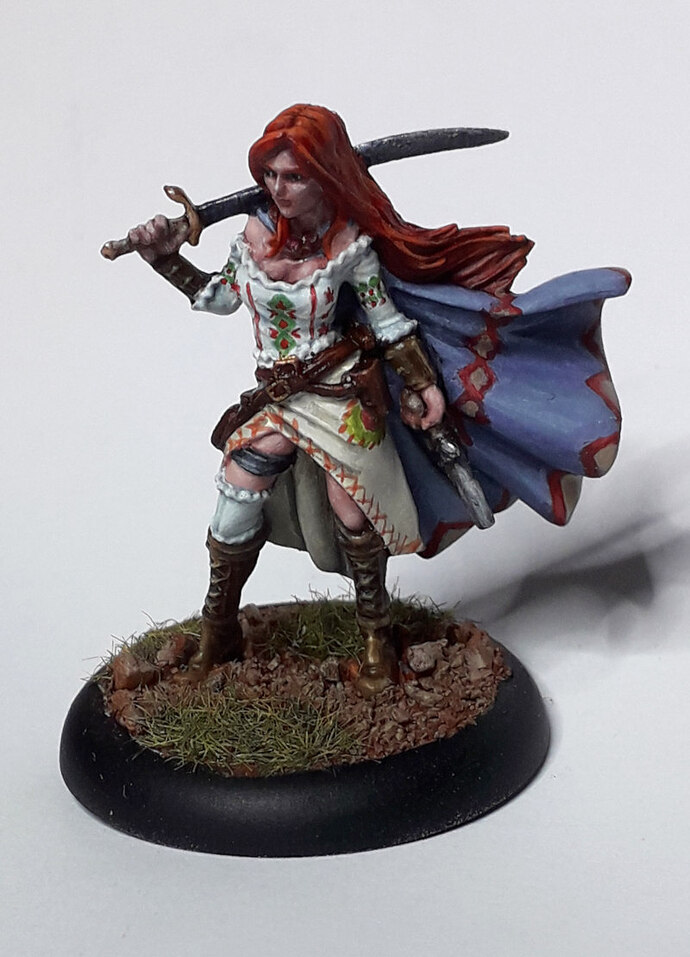



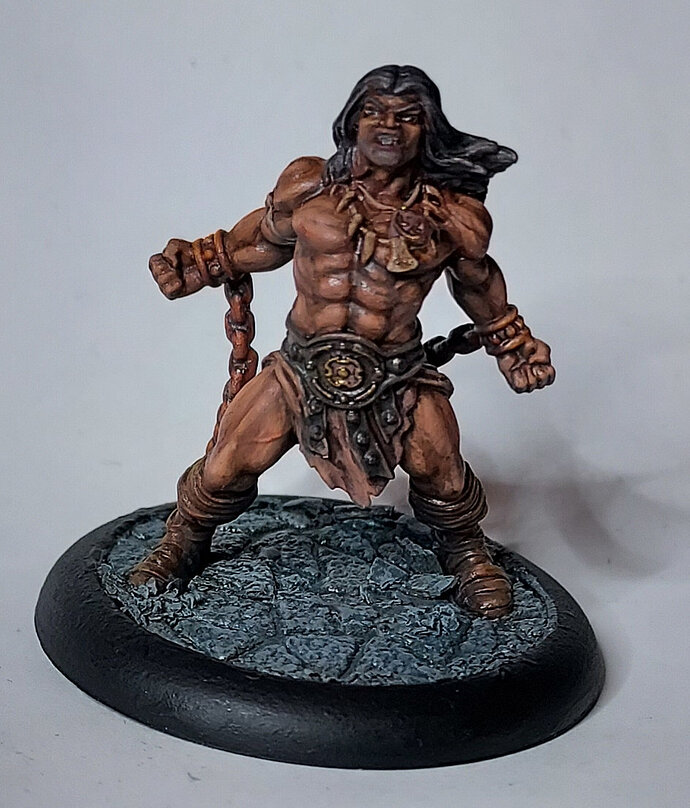


 )
)